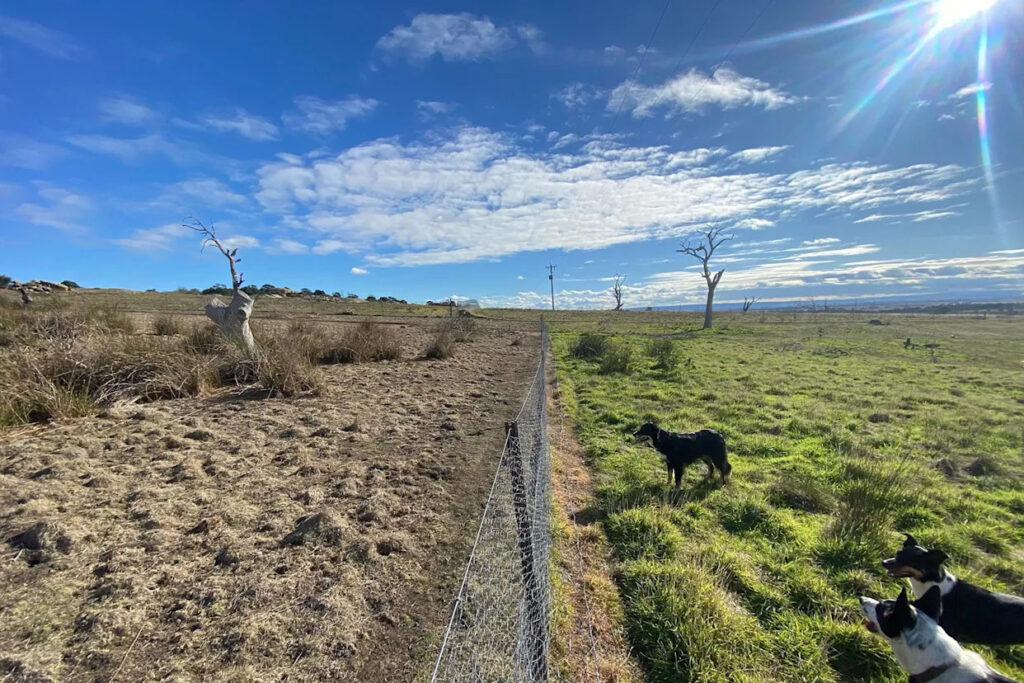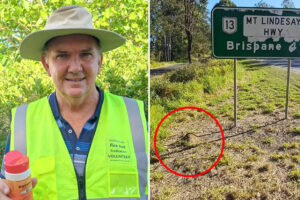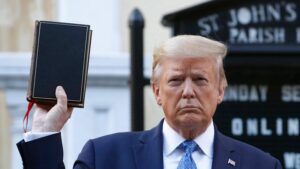
UPDATE: In a groundbreaking environmental shift, 170 hectares of land in Victoria, Australia have been cleared of invasive rabbits, marking a significant triumph for local biodiversity. Just five months after the eradication efforts began at Mount Rothwell, the impact is already visible, with thriving native grasses and a healthier ecosystem emerging.
On the left side of the newly constructed fence, rabbits continue to decimate the landscape, leaving it barren and lifeless. In stark contrast, the right side, now rabbit-free, is bursting with renewed life, showcasing the urgent need for effective wildlife management. The Odonata Foundation, a non-profit dedicated to preserving endangered wildlife, is spearheading this initiative.
Matt Singleton, CFO of Odonata, emphasized the critical role of controlling rabbit populations. “Native grasses are unable to grow due to rabbit overgrazing,” he explained, noting that invasive weeds such as serrated tussocks and Chilean needle grass have flourished in their absence. The ongoing restoration efforts are vital for the survival of native marsupials, such as the eastern barred bandicoot, which plays a key role in seed germination and ecosystem health.
“We’ve seen a massive change right across the landscape,” Singleton stated, underscoring the remarkable transformation. Along with enhancing the growth of native grasses, the presence of small marsupials like the rufous bettong is crucial for dispersing fungal spores that sustain tree health.
The current land management strategy includes regular checks with sniffer dogs to ensure rabbits do not return. The Mount Rothwell sanctuary now reports:
– 170 hectares rabbit-free
– 81 hectares at low density
– 168 hectares at medium density
– 22 hectares at high density
Despite these advancements, the battle against invasive weeds continues. Singleton pointed out that “high-threat weeds are brutal” in their ability to spread, thereby threatening the resurgence of native flora. In response, Odonata is actively hand-pulling these invasive species to promote biodiversity.
Less than 1 percent of Victoria’s volcanic plains grasslands remain, a tragic consequence of years of mismanagement and agricultural practices. Odonata aims to recover these ecosystems on a larger scale while highlighting the importance of small marsupials as essential ecosystem engineers.
The stark contrast between the two sides of the fence at Mount Rothwell serves as a powerful reminder of the urgent need for effective wildlife management. The success of this initiative could set a precedent for similar conservation efforts across Australia, showcasing that with the right strategies, landscapes can be restored and biodiversity protected.
As this restoration project continues to unfold, the eyes of conservationists and environmentalists worldwide are on Mount Rothwell. The hope is that this successful eradication and subsequent recovery can inspire similar actions elsewhere, ensuring that Australia’s unique ecosystems thrive for generations to come.
Stay tuned for more updates on this developing story as Odonata Foundation pushes forward in their mission to restore Victoria’s fragile landscapes.





